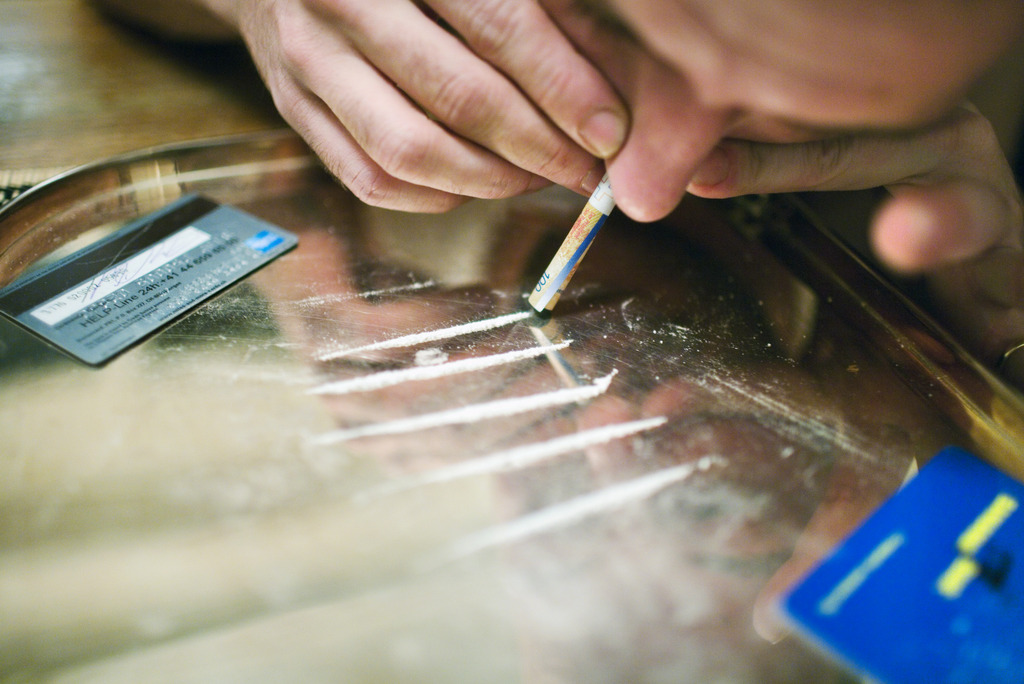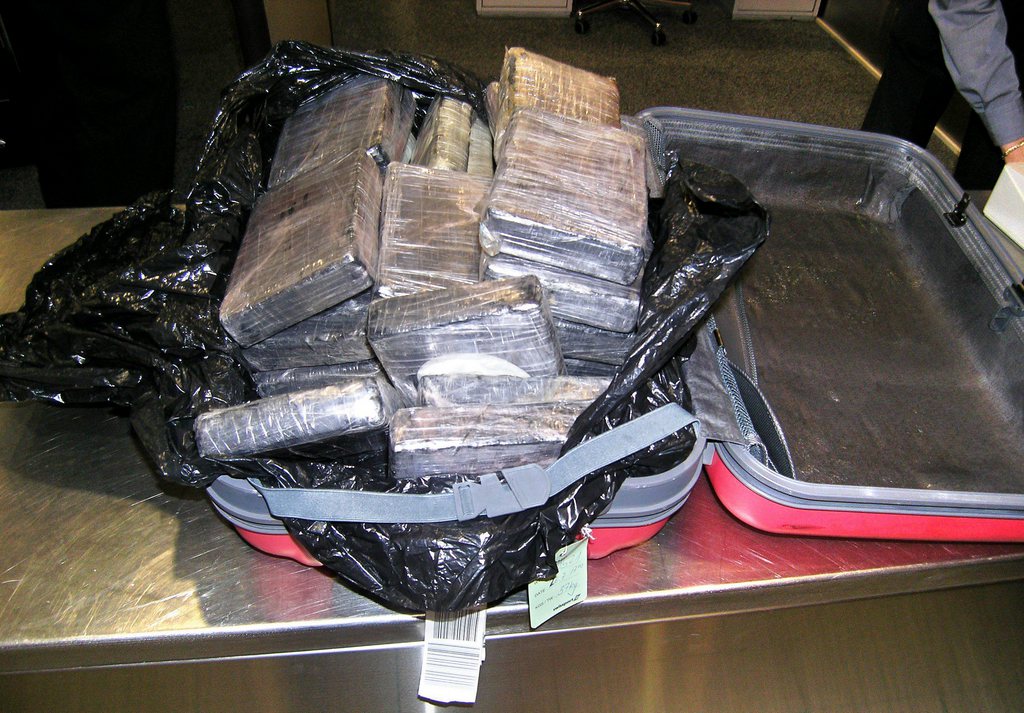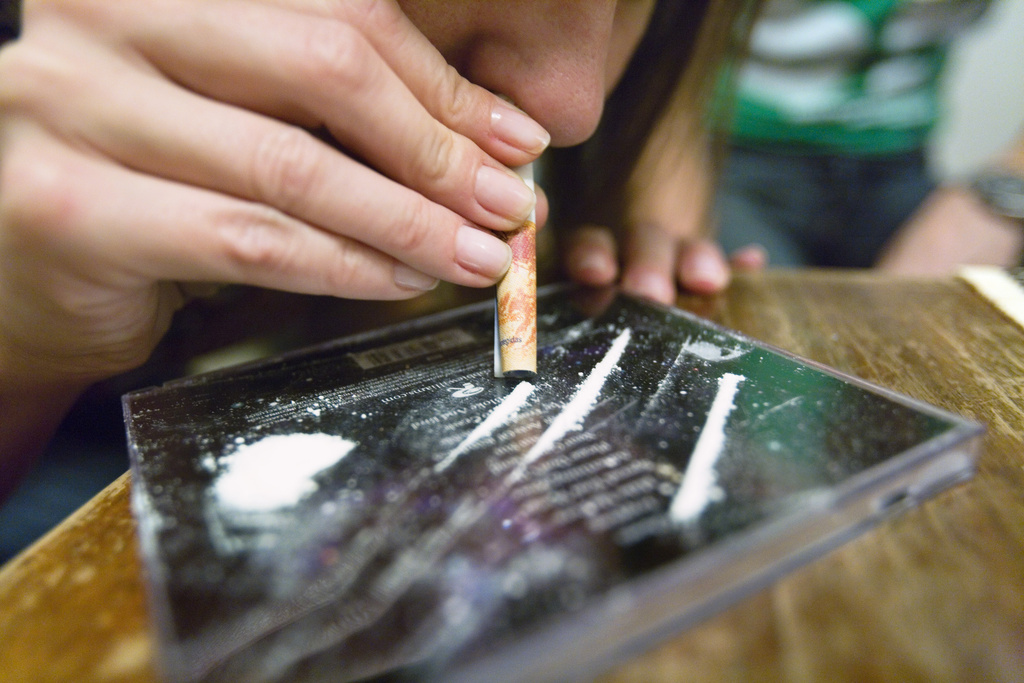Switzerland’s cocaine hot spots rival Amsterdam

A recent study that found cocaine use in big Swiss cities is among the highest in Europe comes as no surprise to experts, who say it is easy to find and affordable. The results go along with Switzerland’s reputation for illicit drug use.
Bern, Zurich, Geneva and Lucerne are hot spots for cocaine, according to Christoph Ort, from the Swiss Federal Institute of Aquatic Science and Technology (Eawag).
“The amounts of cocaine in the sewage of these cities were in the same range as those European cities with the highest consumption,” declared the Swiss researcher.
Ort participated in the first Europe-wide survey into illicit drug use carried out on waste water from 15 million people in 19 European cities, published in the journal Science of the Total Environment, and compared the data with Eawag’s own research gathered in Switzerland last year.
He found that the Swiss cities ranked alongside Antwerp and Amsterdam, with average cocaine consumption equivalent to 1.5 grams per day per 1,000 people.
The news has raised few eyebrows among Swiss drug specialists.
“I’m not surprised as Switzerland has always had a reputation for being a European country with a high consumption of illegal substances, whether it be cannabis, heroin or cocaine,” said Jean-Pierre Gervasoni, head of the social and preventive medical department at Lausanne’s University Hospital.
While many agree cocaine is popular in Swiss cities, there are question marks over the precise figures and sewage analysis methodology.
“We have to be careful with these results as they are not really comparable. But for Addiction Switzerland these kind of conclusions are not really surprising as consumption in the Swiss cities mentioned is high,” said Addiction Switzerland spokesman Simon Frey.
Estimates
Accurate statistics on the number of users and their behaviour remains tricky to come by.
According to the federal police, there are between 25,000-32,000 regular users and 36,000-44,000 occasional users in Switzerland, for a population of eight million. The former account for over 90 per cent of the 4-5 tonnes that supposedly end up there every year, worth up to SFr520 million ($535 million). But these figures are projections based on European and United Nations estimates.
Predicting trends is notoriously difficult. Levels of seizures (401 kg of cocaine) and arrests suggest that illegal drugs markets were generally stable in 2011, the police say.
Meanwhile, the World Health Organization says experimentation among Swiss teenagers has continued to rise slowly from 1.0 per cent of 15-16-year-olds in 1986 to 2.7 per cent in 2010. A national survey in 2007 showed a similar trend among young men.
“There was a clear increase in the years 2000 with easy access and a big drop in the price, accompanied by a sharp drop in cocaine quality,” said Gervasoni.
“But the market seems to have since stabilised although there is quite easy access to illegal substances in all Swiss cities, not just Zurich or Basel.”
Declining popularity
Among addicts who smoke or take drugs intravenously, cocaine use goes in waves, said Peter Menzi, a drug expert with Infodrog, the Swiss coordination office of addiction facilities.
“Three years ago cocaine was more popular, now it’s heroin,” he noted.
Organisations that offer drug-testing in clubs and at festivals say cocaine’s popularity may be waning slightly.
“For the past three of four years use of cocaine has been stable or going down slightly,” said Alexander Bücheli, coordinator for Streetwork, a drug advisory organisation in Zurich.
He said some people may have been put off by the falling quality. Some 70 per cent of cocaine samples tested by the Drug Information Centre in Zurich in 2011 were adulterated with levamisole, a drug used to treat worms in cattle. The average cocaine concentration was 51.7 per cent, varying from five to 99.9 per cent. Dealers may mix up to seven other cutting agents such as local anaesthetics.
Another reason for the drop off may be that that people are increasingly aware of cocaine’s effects, said Bücheli.
“People understand that it’s not really a party drug but an ego drug,” he commented.
Constant hit
Eawag said its tests indicated that use of the white powder may double or even quadruple at the weekend during events such as the Zurich Street Parade, a huge outdoor party on August 12 attended by 900,000 people.
Streetwork, which was present at the event, said ecstasy and speed were the main drugs of choice.
“We had fewer cocaine samples than previously. But it’s difficult to say whether this is due to a reduction in consumption habits,” said Bücheli.
Organisations agree cocaine remains a hit among clubbers and party-goers, however, as it is not difficult to find and relatively cheap.
“Most people know someone who knows someone else who might have some,” said Hannes Hergarten, coordinator with the Bern-based prevention organisation rave it safe. “Coke is expensive – around SFr80-100 a gram – but people here can afford it.”
“There are two tendencies among clubbers right now: some people say coke is not a problem or bad for you, while others say it’s just crap and they recognise that cocaine is nothing for them. Then there are the ambivalent users who know about the dangers but consume anyway.”
“If you ask people about a typical party night they often talk about ecstasy and speed. The reality might be a bit different as cocaine is still an important player on the party scene. If there is the possibility of a line before a party starts or afterwards, some people may find it difficult to say no.”
Cocaine comes from the coca plant and is normally a white powder that is snorted, but it can also be injected, swallowed or made into a smokeable drug (crack).
In the 19th century it was prised for its healing properties. In the 20th century, however, by the 1970s and 1980s it had taken its place in the drugs scene. But it was also used as a lifestyle drug.
Cocaine gives a high but only for a short time. Then there is the comedown with feelings of depression, worthlessness, temper and sleeplessness. Other side effects are psychological changes, aggression and, with higher doses, even malnutrition and psychosis.
(Source: Addiction Info Switzerland)
The researchers calculated that 356 kg of cocaine is used every day in Europe, which amounts to approximately 10-15% of global production of the drug, according to the United Nations Office on Drugs and Crime.
Antwerp and Amsterdam topped the survey, with average cocaine consumption equivalent to 1.5 grams per day per 1,000 people.
Barcelona, London, Milan and Paris registered average use of between 0.5 and 1 gram of the drug, while Scandinavian cities such as Stockholm, Oslo and Helsinki had the lowest level at 0.15 gram per 1,000 people.
The research into illegal drug traces in urine found in waste water also indicated that the drug is used most in central and western Europe rather than eastern and northern Europe.
Cocaine is, after cannabis, the second most tried drug in Europe, although its use is concentrated in a small number of high prevalence countries, some of which have large populations. It is estimated that about 14.5 million Europeans have used cocaine at least once in their life, on average 4.3% of adults aged 15-64 years. About 4 million Europeans are estimated to have used the drug in the last year (1.2% on average).
On average 4.8% of Swiss 15 to 24-year-old men said they had used cocaine at least one in their life, according to a 2007 national survey, up from 3.8% in 2002, while figures for women were stable (2.8% versus 2.7%).

In compliance with the JTI standards
More: SWI swissinfo.ch certified by the Journalism Trust Initiative












You can find an overview of ongoing debates with our journalists here . Please join us!
If you want to start a conversation about a topic raised in this article or want to report factual errors, email us at english@swissinfo.ch.